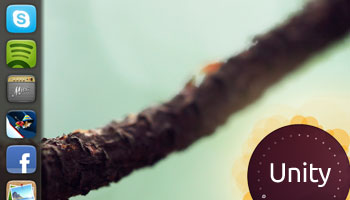
Ever wondered how you can reset Unity and Compiz back to their default settings?
Providing you are confident enough with the command line you’ll find that it’s a pretty easy thing to do.
Both Unity, and it’s window manager ‘Compiz’, can be set to their default values with just a command or two…
Why Reset Unity?
Before I get on to showing you how to reset let’s look at some of the reason why you might want to do it.For example:
- You might want the feel of a fresh start, but without the bagge of an actual fresh start
- You may have tweaked some system settings – intentionally or not – and now want to revert them
- You’re experiencing issues and want to see if your settings are to blame
What a Reset Does And Doesn’t Do
The word “reset” sounds scary but in this instance it isn’t.Resetting Unity only affects the following:
- The number of workspaces
- Launcher size, behaviour & animations
- Multi-monitor behaviours
- Shortcuts for the HUD, Window Spread, Alt+Tab, etc
- Compiz animations and effects
This means that any indicator changes made, such as System Tray whitelisting, or Sound Menu blacklisting, will also be unaffected.
How to Reset Unity in Ubuntu 12.10 & 13.04
In Ubuntu 12.04 resetting the Ubuntu desktop require the running of one command:unity --reset . This was retired in Ubuntu 12.10.Yo get your Unity desktop settings back to brand spankin’ new behaviour in 12.10 and 13.04 we need to do a few things…
Step 1
Unity, and Compiz, the window manager that powers Unity, stores its settings in a configuration system called ‘dconf‘.This isn’t a standard bit of software to play with, so proceed with caution.
Install dconf-tools:
dconf reset -f /org/compiz/
Log out of your desktop session and back into Unity for changes to take effect.
Step 2
To refresh your Unity launcher with the default set of icons, run the following in a Terminal:unity --reset-icons
This command will “restart” Unity immediately, running from the Terminal. Closing the Terminal will also ‘close’ Unity, so it’s best to log out and back in after running this command.
Nessun commento:
Posta un commento